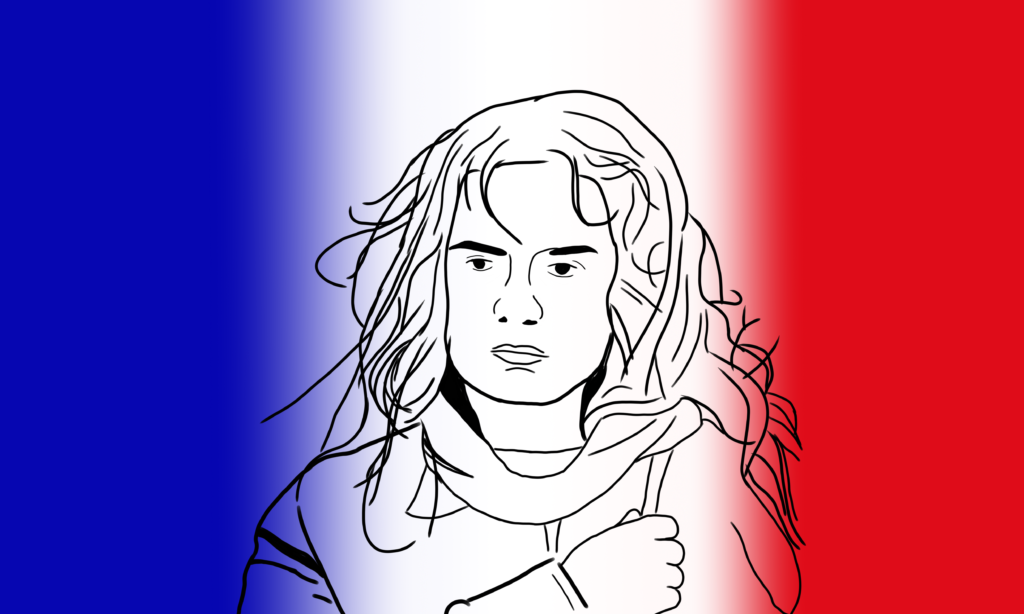By Loore Puusepp
Edited by Aimée Dhonte?
An exploration of involuntarily celibate men from French cinematic history.
To many readers the name of La Nouvelle Vague may be unheard of, which is why we need to give an appropriate description of the movement which dominated cinemas for over a decade. The French New Wave art film movement began in the late 1950s as a way of rejecting traditional filmmaking characteristics in favor of experimentation and countering icons from film history. Whether it be with visual and editorial elements, stylization or narrative – this movement turned cinema upside down and could be considered one of the most influential movements in the history of cinema.

An introduction to the ideas of that time is necessary to grasp the whole movement and therefore critique the male gaze, which dominated the screen at this time (and still does). The Second World War’s socio-economic impact played an important role in the beginning of the movement. Due to France being financially and politically drained, art and cinema went back to traditional and classical ideas, which the French new wave went against. With the help of influences from the Italian neorealism and classical Hollywood cinema, the French new wave was created. It is also important to get an idea of who were the people leading this movement – Francois Truffaut, Jean-Luc Godard, Eric Rohmer, Claude Chabrol and Jacques Rivette all worked for a film magazine called Cahiers du Cinema in the height of new wave. However, it is important to keep in mind other revolutionary directors at the time as well, especially since all of the aforementioned artists were middle class white men. Agnes Varda, Jacques Demi, Alain Resnais, Chris Marker and Henri Colpi were considered “Left Bank” directors at the time, this separation of the groups coming from the fact that the latter all lived in the Left Bank area of Paris.
Moreover, aside from there being a locational difference between these two groups, the divide goes deeper than that and this is displayed in their films, which are distinctly different in style, hence why the issue of involuntarily celibate men has to also be analyzed in a different manner. An example of this is one of Varda’s most prominent films, Vagabond, which deals with a young girl’s quest to rebel against the system and travel around with a tent, refusing to conform to the ideas of the time. Of course, in this film, we see the men that the protagonist must deal with, the whiny men, who think that women owe them sex or that they themselves are essentially entitled to it. In this film we also get an insightful look at how a young woman navigates in this world and makes choices based on the men around her. This insight is lost in much of the “Right Bank” group’s work, as it is dominated by male writers, directors and producers. This can be seen in Godard’s À bout de souffle, where the film is based around the relationship between a man and a woman, yet issues of consent, rights and freedom have no female insight. In this film the women are there to bring out further the traits of the male protagonist and on their own, and even the women’s rebellion (often expressed through sexual freedom) is tainted by the ideas, which entice men and do not accurately portray women.
This male protagonist, who is pained by the unlovable women in his life, is best seen in Godard and Truffaut’s films. The protagonist is often played by Jean-Pierre Léaud in Godard’s films, which can be seen in Masculin Feminin, Alphaville, La Chinoise, Le Gai savoir. There are limitless similarities between the male protagonist in these films – the misogynistic hero, who expects women to give him everything he wants and to the audience his anger-filled responses to rejection are normalized. Similarly in Truffaut’s work like Antoine et Colette, made in 1962, we are given the story of a young relationship between a girl and a boy. The girl’s rejection of the boy’s advances, despite being completely inappropriate, is displayed as a negative thing, her rejection and rebellion against his wishes automatically paints her as a villain. This film is rather a virgin’s manifesto against women than a story of young love, which makes it problematic that this anger is portrayed as love or mere loneliness.
Overall, the French new wave movement was revolutionary and within the brief popularity of this expression, some of the greatest short films, documentaries and features were created. However, it is possible that this was a revolt of angry men in a stylized manner, and it did not help women advance much further than before in the world of cinema, despite being so modern and revolutionary. The way that the male protagonists actions are justified and normalized reflects how society views the actions of men.
